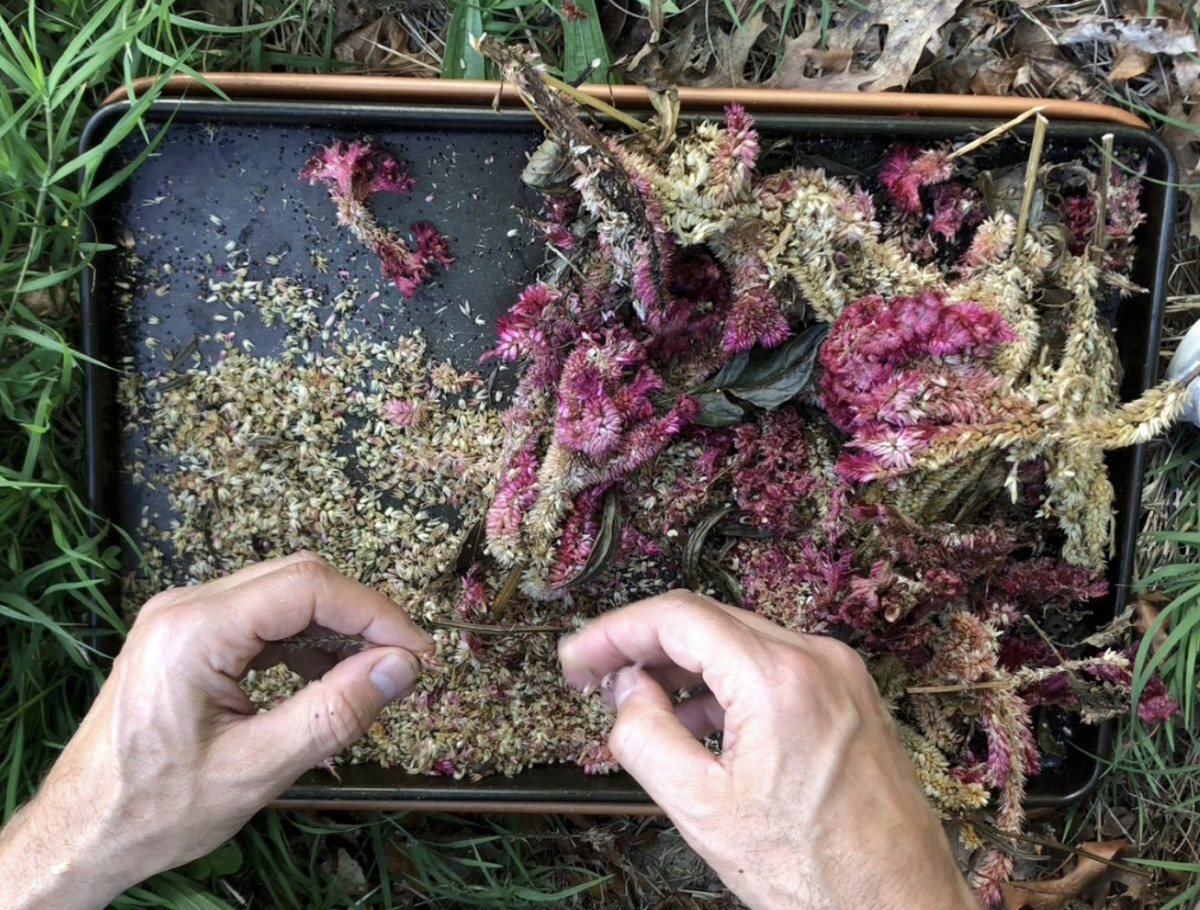Celosia is a popular ornamental flower grown for its vividly colored plumes. But if you want to collect celosia seeds to grow new plants, it helps to know what the seeds look like. Here is an overview of celosia seed characteristics and how to identify, harvest, and store them.
An Overview of Celosia Seed Features
Celosia seeds are tiny, flat, and oval or disk-shaped. They have a smooth, shiny surface and are typically dark brown or black. Some distinguishing traits include:
- Color: Very dark brown to black
- Size: 1-2mm long
- Shape: Oblong, flattened, and oval
- Texture: Glossy and smooth
- Weight: Extremely light at around 0.5-1mg per seed
The small seeds develop in dry, triangular celosia pods that form after flowering. The pods turn from green to tan and split open when the seeds mature in late summer or fall. Each pod contains around 20-50 neatly arranged seeds.
Where Celosia Seeds Come From
For seeds to form celosia flowers must be pollinated by insects like bees, butterflies, and beetles. The plume-like blooms come in bright colors like red orange, yellow, pink, and purple.
After successful fertilization, it takes around 4-6 weeks for the seeds to fully develop. When mature, the pods dry and crack open to release the seeds to the wind or ground below. Plants grown from seed exhibit more genetic diversity versus cloned plants.
Appearance of Immature Celosia Seeds
Inside young, unripe celosia pods, the seeds appear very small, green, and underdeveloped. As the seeds mature, they gradually plump up and darken to reddish-brown before turning nearly black when completely ripe.
Sometimes small dark dots are visible in the pods before the seeds fully enlarge. But these dots are just infertile ovules not viable seeds. Only the successfully pollinated ovules will grow into plantable seeds.
Identifying When Celosia Seeds Are Ripe
Here are some signs that celosia seeds are mature and ready to be harvested
- Seed pods turn from green to tan or brown
- Pods split open partly or completely
- Seeds are very dark brown or black
- Seeds detach easily from pods when touched
- Plants are flowering less and going dormant
For best viability, gather seeds once the pods are completely dry and split open on their own. Seeds collected too early tend to have poor germination rates.
Storing Harvested Celosia Seeds
Fresh celosia seeds have the highest germination percentages. However, the seeds can remain viable for 1-3 years if stored properly in a cool, dry place. To maintain viability:
- Allow seed pods to dry fully on the plants before harvesting
- Separate seeds from pods and chaff
- Place seeds in airtight containers in a refrigerator or dry, unheated room
- Avoid exposing seeds to heat, humidity, or direct sunlight
Ideal storage conditions keep the seeds dormant until ready to be sown. Always label containers with the seed variety and year collected.
Appearance of Non-Viable Celosia Seeds
Not all harvested celosia seeds will be viable or able to sprout. Non-viable seeds are typically smaller, lighter in color, misshapen, and lack the glossy seed coat. Old, moldy, damaged, or very lightweight seeds should be discarded.
A high percentage of non-viable seeds can indicate issues like poor pollination, not allowing seeds to fully mature before harvest, or improper storage conditions. Healthy, viable seeds will be plump and black.
How to Harvest Celosia Seeds
Follow these steps to collect celosia seeds at peak ripeness:
-
Wait until seed pods turn brown and split partly or fully open.
-
Cut flower stalks with very dry pods into a paper bag.
-
Hang stalks to dry further and release seeds into the bag.
-
Alternatively, rub pods between fingers over a container to separate seeds.
-
Spread seeds out to dry fully before storing in airtight containers.
-
Label with the celosia variety and year collected.
-
Viably stored seeds remain plantable for up to 3 years.
Growing Celosia from Harvested Seeds
Celosia seeds can be directly sown outdoors in spring after danger of frost has passed. For a head start, begin seeds indoors 6-8 weeks prior. Follow planting directions on the seed packet for spacing and depth. Celosia thrives in full sun and well-drained soil. Allow the soil to partly dry out between waterings. Pinch back growing tips to encourage bushy, compact growth. Celosia is an annual flower in most regions. Collecting and storing seeds allows it to self-sow the following year.
Final Thoughts
Knowing what celosia seeds look like makes it easier to identify when they are mature and ready to harvest. With proper harvesting techniques and ideal storage conditions, celosia seeds can maintain high viability for sowing in future seasons. Growing celosia from your own harvested seeds is an economical way to continue brightening up the garden with this beautiful ornamental flower.
How To Collect Celosia Seeds Harvest Store Save
FAQ
Does celosia reseed itself?
Does celosia grow back every year?
Is celosia hard to grow from seed?
- A Complete Guide to Caring for Yuki Cherry Blossom Shrub - January 23, 2025
- Identifying Red Hot Poker Seeds: What to Look For When Harvesting Torch Lily Pods - January 23, 2025
- A Complete Guide to Harvesting Evening Primrose Seeds - January 23, 2025

